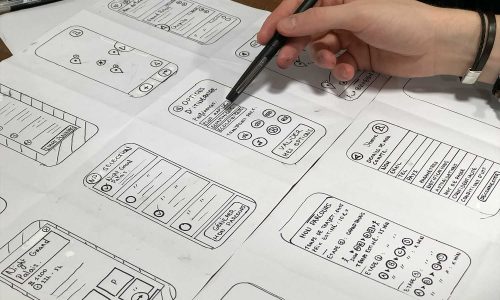- Big Buzz Ideas
- 0 Comments
- 1812 Views
Introduction
The internet has undergone significant transformations since its inception. From the early days of static web pages (Web 1.0) to the rise of dynamic, user-driven content (Web 2.0), we are now entering the era of Web 3.0. This next-generation internet promises decentralization, enhanced privacy, and AI-driven experiences. But what exactly is Web 3.0, and how will it shape the future of the digital world? Let’s dive in.
What is Web 3.0?
Web 3.0, also known as the decentralized web, is the next phase of internet evolution that aims to give users more control over their data, eliminate centralized authorities, and enhance user experiences through blockchain, artificial intelligence, and semantic web technologies. Unlike Web 2.0, which relies on tech giants like Google, Facebook, and Amazon to control data, Web 3.0 is based on peer-to-peer interactions, smart contracts, and trustless transactions.
Key Features of Web 3.0
1. Decentralization
One of the core aspects of Web 3.0 is decentralization. Instead of data being stored on centralized servers controlled by corporations, it is distributed across multiple nodes using blockchain technology. This enhances security, reduces censorship, and prevents data breaches.
2. Blockchain and Smart Contracts
Blockchain technology underpins Web 3.0, allowing for transparent, secure, and immutable transactions. Smart contracts—self-executing contracts with predefined rules—enable users to make transactions and agreements without intermediaries.
3. AI and Machine Learning
Web 3.0 integrates artificial intelligence (AI) and machine learning (ML) to provide personalized experiences. Search engines will become smarter, understanding user intent rather than just matching keywords.
4. Semantic Web
The semantic web enables machines to understand and process data in a human-like manner. This means that search engines and applications will provide context-aware and more relevant results, improving user experience.
5. Interoperability and Connectivity
Web 3.0 aims to create a seamless user experience across multiple platforms and devices. With the rise of the Internet of Things (IoT), users will have more interconnected digital environments.
How Web 3.0 Differs from Web 2.0 and Web 1.0
| Feature | Web 1.0 (Static Web) | Web 2.0 (Social Web) | Web 3.0 (Decentralized Web) |
|---|---|---|---|
| Time Period | 1990s – Early 2000s | Mid-2000s – Present | Emerging (2020s – Future) |
| Data Control | Centralized | Centralized by Big Tech | Decentralized (Blockchain) |
| User Role | Passive Consumers | Active Contributors | Sovereign Data Owners |
| Monetization | Ads & Direct Sales | Data-driven Advertising | Crypto & Tokenization |
| Security & Privacy | Low | Moderate (Platform-controlled) | High (Trustless, Blockchain-based) |
| AI Integration | None | Basic Algorithms | Advanced AI & ML |
Applications of Web 3.0
1. Decentralized Finance (DeFi)
Web 3.0 is driving the DeFi revolution, allowing users to conduct financial transactions without banks or intermediaries. Platforms like Uniswap, Aave, and Compound enable peer-to-peer lending, borrowing, and trading.
2. NFTs and Digital Ownership
Non-fungible tokens (NFTs) allow creators to own, sell, and trade digital assets on blockchain networks. This revolutionizes the art, gaming, and entertainment industries.
3. Decentralized Social Media
Traditional social media platforms control and monetize user data. Web 3.0 introduces decentralized alternatives like Mastodon, Lens Protocol, and Minds, where users own and control their data.
4. Metaverse & Virtual Worlds
Web 3.0 is powering the rise of the Metaverse, a virtual, immersive world where users can work, play, and socialize using blockchain-based identities and assets.
5. Secure Digital Identity
With Web 3.0, users can create self-sovereign identities, meaning they control their personal data without relying on centralized platforms like Facebook or Google for logins.
Challenges and Limitations of Web 3.0
Despite its potential, Web 3.0 still faces several challenges:
Scalability Issues: Blockchain-based networks like Ethereum experience high transaction fees and slow speeds.
User Experience (UX): Many Web 3.0 applications have complex interfaces that can be difficult for non-technical users.
Regulatory Concerns: Governments and regulatory bodies are still figuring out how to handle cryptocurrencies, DeFi, and data privacy laws.
Adoption Barriers: The shift from Web 2.0 to Web 3.0 requires users to learn new technologies like crypto wallets, smart contracts, and decentralized applications (DApps).
Future of Web 3.0
As technology advances, Web 3.0 is expected to redefine digital interactions. With improvements in blockchain scalability, AI, and interoperability, we may see:
Mainstream adoption of decentralized applications (DApps).
More secure and private online experiences.
Integration of Web 3.0 into IoT and smart devices.
Widespread use of digital identities and tokenized economies.
Conclusion
Web 3.0 represents a paradigm shift in how we interact with the internet. By leveraging decentralization, AI, and blockchain, this new era of the web will provide a more secure, transparent, and user-centric experience. While challenges remain, the potential of Web 3.0 is limitless, paving the way for a revolutionized digital world.
Are you ready for the Web 3.0 revolution? 🚀 Let us know your thoughts in the comments!

